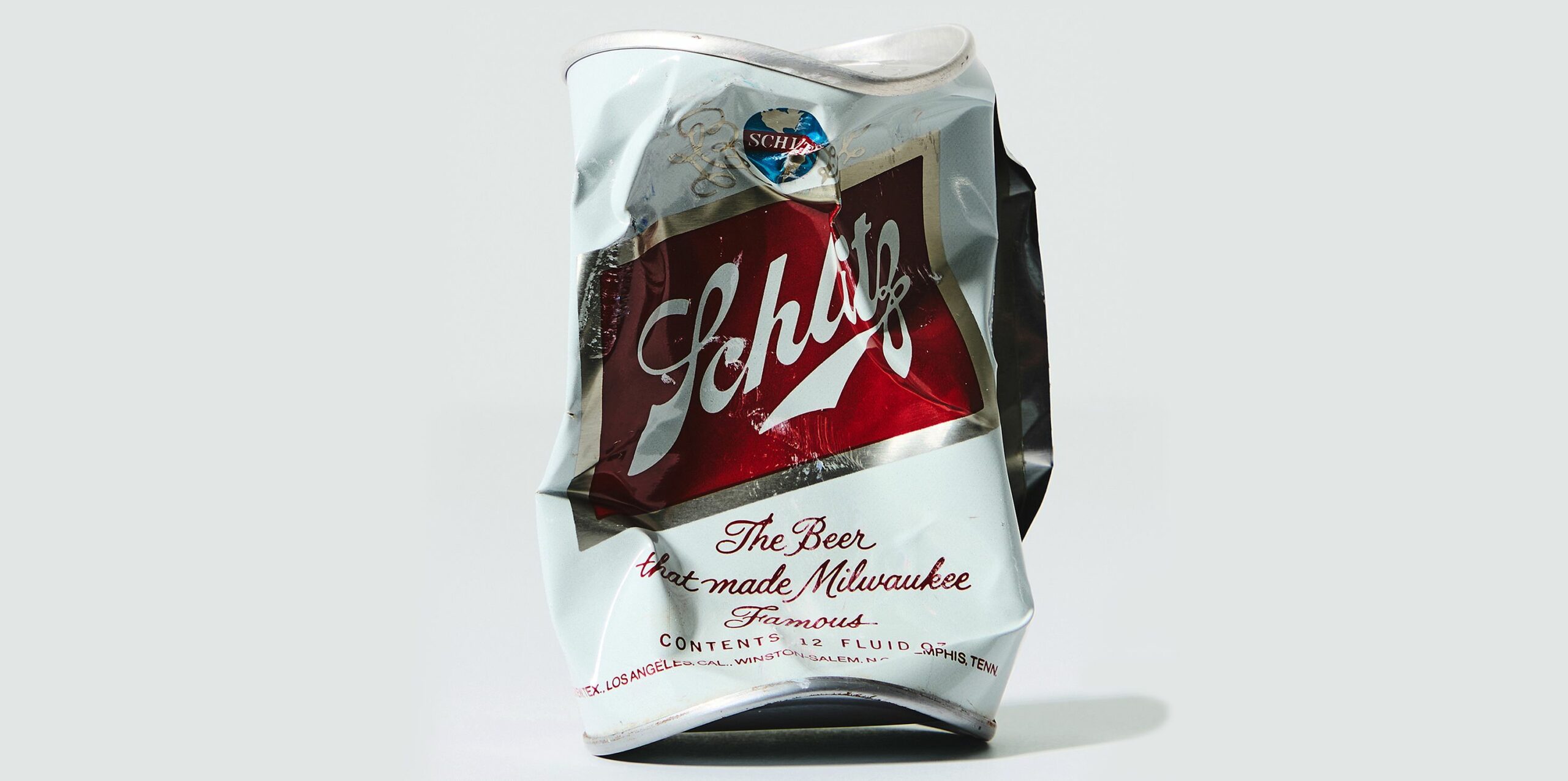The accusations against the hundred-year-old brewer were vast and varied. They stretched from the sophisticated, like that payment to complete the Astrodome, to the more Dukes of Hazzard style, like paying off bootleggers in Alabama to run Schlitz into dry counties. When asked about the SEC indictments in our interview, Martin was dismissive: “It was a giant fishing expedition.”
Martin argued that it wasn’t the aforementioned abysmal decisions made by Schlitz nor the SEC indictments that caused the Schlitz implosion. Nope. According to Martin, what contributed to the demise of Schlitz “was Bob Uihlein making the mistake of dying.”
The Uihlein to whom he’s referring was one Robert A. Uihlein, the much-beloved, polo-playing company head and Martin’s number-one guardian. The Uihlein family had been running the brewery for a century—the family were the Milwaukee version of the Astors or the Morgans in New York City.
Martin recalled chatting with the elderly comptroller of the company, Werner Lutz. “Lutz always said, ‘If your name isn’t Uihlein, sonny, you’re hired help, and I’m hired help, too,’ ” Martin said with a laugh, mimicking Lutz’s German accent.
Even as Martin was running the beer war against Budweiser, his home life was unraveling. He’d met his wife, Diane Moreland, in college, and they had married soon after. But by the mid-seventies, their staid midwestern life was being upended by Diane’s struggle with bipolar disorder, which forced frequent hospitalizations and put a strain on the marriage. They separated and later divorced.
Right at about this time, Martin began a romance with Kaye Rusco—the sharp, politically savvy executive secretary to Uihlein. Before Schlitz, she had worked for the governor of Minnesota and had been one of the famed “Boiler Room Girls” on Robert F. Kennedy’s presidential campaign. At Schlitz, Rusco was operating within the center of power, working directly for Uihlein and closely with Martin, whom she would eventually marry. As the SEC closed in, Rusco was “promoted” out of the executive suite—a move that appeared to be calculated to distance her from the scandal that was descending on Schlitz.
Uihlein had always had Martin’s back and given him full autonomy to run the marketing department the way Martin saw fit. It’s hard to believe that the duo weren’t in lockstep when it came to the extraordinary measures taken to increase market share. And it’s equally hard to speculate what Uihlein might have done to fend off the impending disaster. But Uihlein died after a brief bout with leukemia in 1976, and Martin no longer had his protector at the top of the company.
In fact, by the time the indictment hit, Martin was already out the door.
Holiday Massacre
On the morning of December 16, 1976, as the SEC investigation was beginning to accelerate, Martin arrived at his office as usual. But the mood was noticeably different. He was immediately summoned to the office of Schlitz’s newly installed president, Eugene Peters, who had taken over for the recently deceased Uihlein.
At his desk, Peters slid over to Martin a release and a waiver, followed by a check and a pen. Peters got right to the point: Due to the growing legal mess, he was firing Martin and explained that Martin was being terminated with cause. If he signed the release and wavier, said Peters, Martin could keep the check for $100,000 in severance.
In his autobiography, Martin recalls the moment and what he said to Peters, “ ‘Gee, in addition to the fact that this is certainly a lovely Christmas present that I much appreciate, I’m afraid I won’t be able to avail myself of the generous additional six months’ pay’—and proceeded to tear up the release and waiver and threw them into his wastebasket.” In that case, Peters said, they’d go to plan B, which allowed Martin not to sign anything and get $50,000, half of the minimum he was due for his twenty-five years with the company.
Schlitz didn’t just fire Martin, who at the time was still senior vice president of marketing. Peters also shitcanned Martin’s cohorts Thomas Roupas, the vice president of sales; Abe Gustin, the director of national sales services; and William Timpone, the director of field sales. The company reckoned they’d look better in the media tossing out a few corpses. As Martin recalled in his autobiography, “And that was kind of the end of my career at Schlitz.”
“What we want, Mr. Martin, is to put your ass in jail,” said the federal prosecutor, “which is certainly where it belongs.”
What Martin didn’t know was that Schlitz had already gone to the Milwaukee Journaland fed them the story of Martin’s firing, and it was picked up in multiple newspapers the following day. On the other hand, what Schlitz didn’t know was that amid the chaos of the SEC investigation, Martin had secretly received a stellar job offer: to be the president of United Vintners in California, a successful beverage-distribution company. But his new employer was a little gun-shy about taking on a company president being pursued by the government on massive counts of fraud.
Not long after Martin was fired, in early 1977, Kravit asked him—asked being the operative word here—to testify in front of a grand jury. Martin, seeing a potential way to clear his name and secure his new job with United Vintners, offered to make a deal. “I said, ‘I will come down and answer any question, truthfully, for one day on any subject that I know about,’ ” said Martin. “ ‘But at the end of that day, you have to give me a letter that says that you’re through with me.’ ” The letter would essentially be a get-out-of-jail-free card.
The government agreed to his request, and on a chilly morning in March 1977, Martin arrived at the federal courthouse in Milwaukee, an imposing Romanesque structure built in 1899.
Right off the bat, according to Martin, things didn’t go well. “I said, ‘Well, gentlemen, I’ve agreed to testify all day on anything you want. But maybe we can speed things along if you tell me what areas most interest you, or what is it that you want?’ ” Kravit’s reply was far less amicable.
Martin recalled that Kravit took his glasses off and said, “What we want, Mr. Martin, is to put your ass in jail, which is certainly where it belongs.”
Kravit doesn’t recall putting it quite that way, but after some jousting, Martin did eventually offer grand-jury testimony and Kravit got what he wanted. According to the Offer of Proof, written by Kravit laying out the scam, Martin testified, saying, “We knew this activity [payment of inducements] was in a gray area. It was standard procedure in the beer business to do it that way. And the BATF [Bureau of Alcohol Tobacco and Firearms], which was a regulatory agency, had reviewed a number of things, to our certain knowledge, and nothing was happening to anybody.”
In a nutshell, Martin’s defense was: Everyone was doing it, and no one had been busted before. So why are you picking on me?
Out for Vengeance
Rather than just accepting the letter and taking a new gig at United Vintners, Martin now had another idea: revenge. And his vengeance would be cold and calculated. Schlitz had no idea what Martin was about to unleash on the company. The hubristic decision to leak the story of the Schlitz executive’s firing to the newspapers was about to be used against them.
As Martin recalled, “In the state of Wisconsin, you can get fired for any reason whatsoever. Except as long as it’s not exclusively malice. Well, how would you like to prove something’s exclusively malice?”
Though an employer couldn’t be sued for wrongfully terminating an employee, an employer couldbe sued for libel. And that’s just what Martin did. Once again, tucking himself nicely behind plausible deniability, in 1978, Martin filed suit against Schlitz and its then–chief executive Jack McKeithan, charging libel for the stories that were printed about him the day after he was fired. After all, how employable could you be when The New York Times mentions your name in an article titled “Schlitz Discharges 3 Executives in Reaction to Kickback Inquiry”?
According to the Milwaukee Sentinel, Martin’s suit accused the company of “disseminating throughout the brewing industry libelous statements saying he was ‘guilty of illegal and/or unethical acts.’ ” If you believe the SEC and its 747-count indictment, then Martin had just filed a lawsuit against the company for which he was committing criminal activity—for bad-mouthing him for that criminal activity.
Schlitz’s Tap Runs Dry
On October 31, 1978, Schlitz settled with the SEC by pleading no contest to a single count of criminal conspiracy; failing to keep accurate, permanent records for tax purposes; and paying millions of dollars to retailers to persuade them to sell Schlitz beer. However, this mea culpa didn’t forestall the inevitable. Due to the massive egos within the company and the disastrous tone-deaf business decisions they made—along with the mishandling of the government indictments and Martin’s ongoing civil lawsuit—the once billion-dollar behemoth that was the Joseph Schlitz Brewing Company became a shell of itself, an afterthought.
Perhaps the final blow that killed off Schlitz came in the form of a 1981 labor strike. Seven hundred manufacturing-plant workers walked off the job in Milwaukee in a monthslong labor dispute, and shortly thereafter the company announced that it would be closing its legendary Milwaukee plant forever.
Schlitz was now lying facedown in the corporate gutter, bleeding money. Rivals circled the lifeless beer maker. In 1982 the Stroh Brewery Company bought Schlitz for a paltry $500 million in cash—roughly the revenue Schlitz would pump out in a decent quarter in the 1970s. Even with the acquisition, though, Schlitz and Stroh together were still a distant third in sales behind Anheuser-Busch and Miller. In the decades after, the company was sold two more times to massive conglomerates. Today, ironically, Schlitz is owned by a onetime local competitor, Pabst, which itself is now pretty much a holding company that acquires heritage beer brands.
In 1985, seven years after launching his lawsuit, a victorious Martin stepped over Schlitz’s lifeless corporate body in the streets of Milwaukee. A jury handed him a hefty $1.3 million judgment (though a judge later trimmed the amount, deeming it excessive). Martin leveraged his triumph into a coveted marketing job in California, far away from Milwaukee and the beer wars. His career flourished, and he and Kaye moved into an opulent home they cheekily referred to as the House That Schlitz Built.
There were winners in the beer wars, but Schlitz wasn’t one of them.












Post Comment